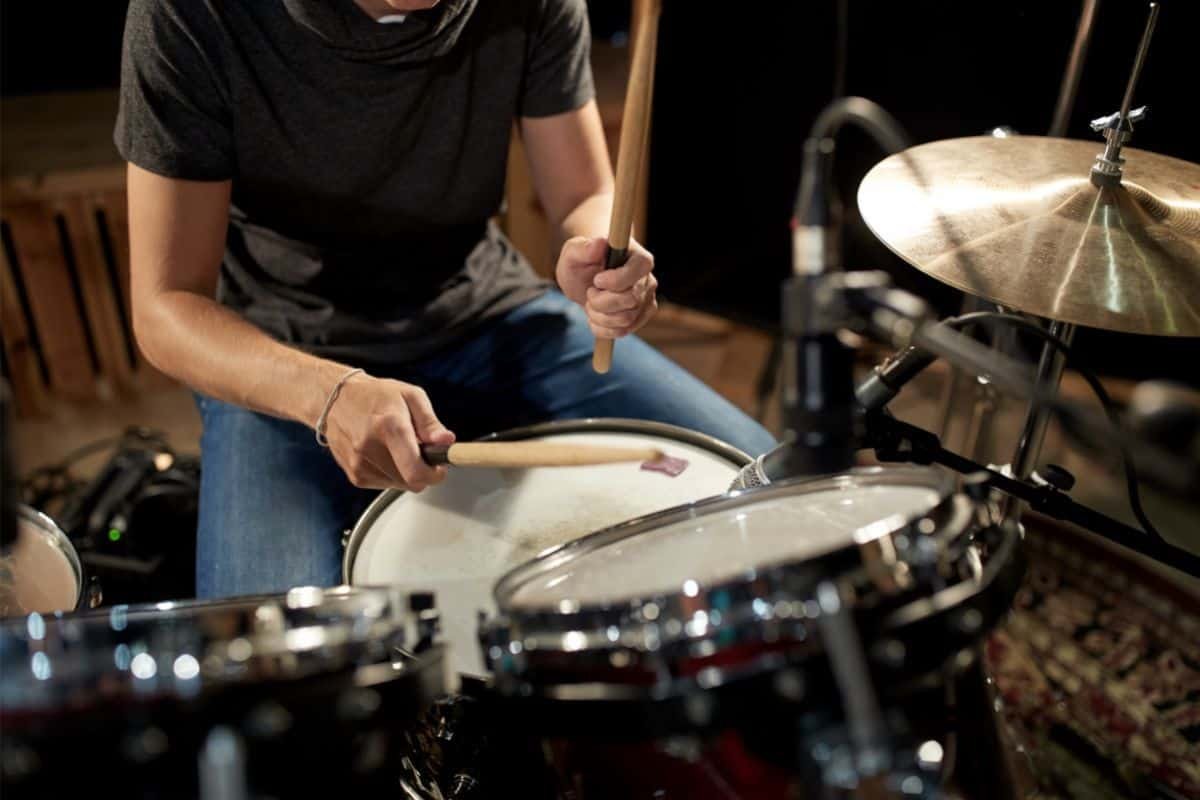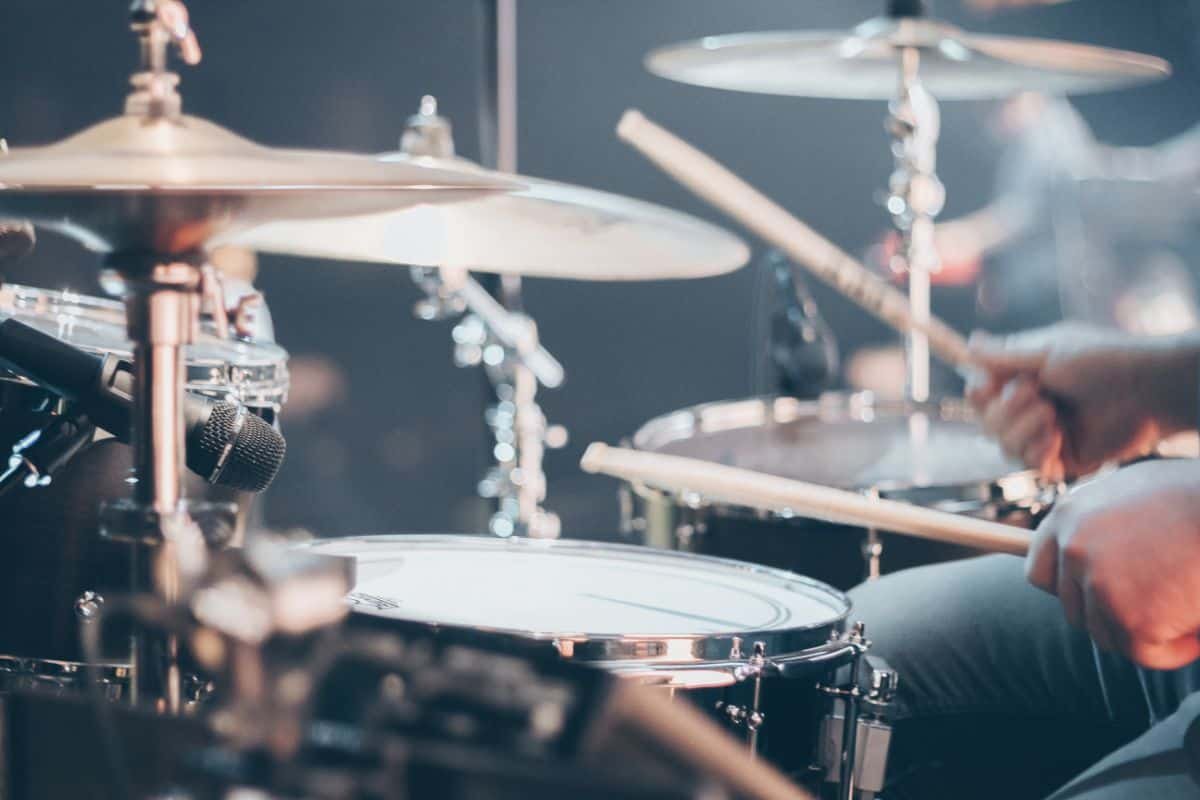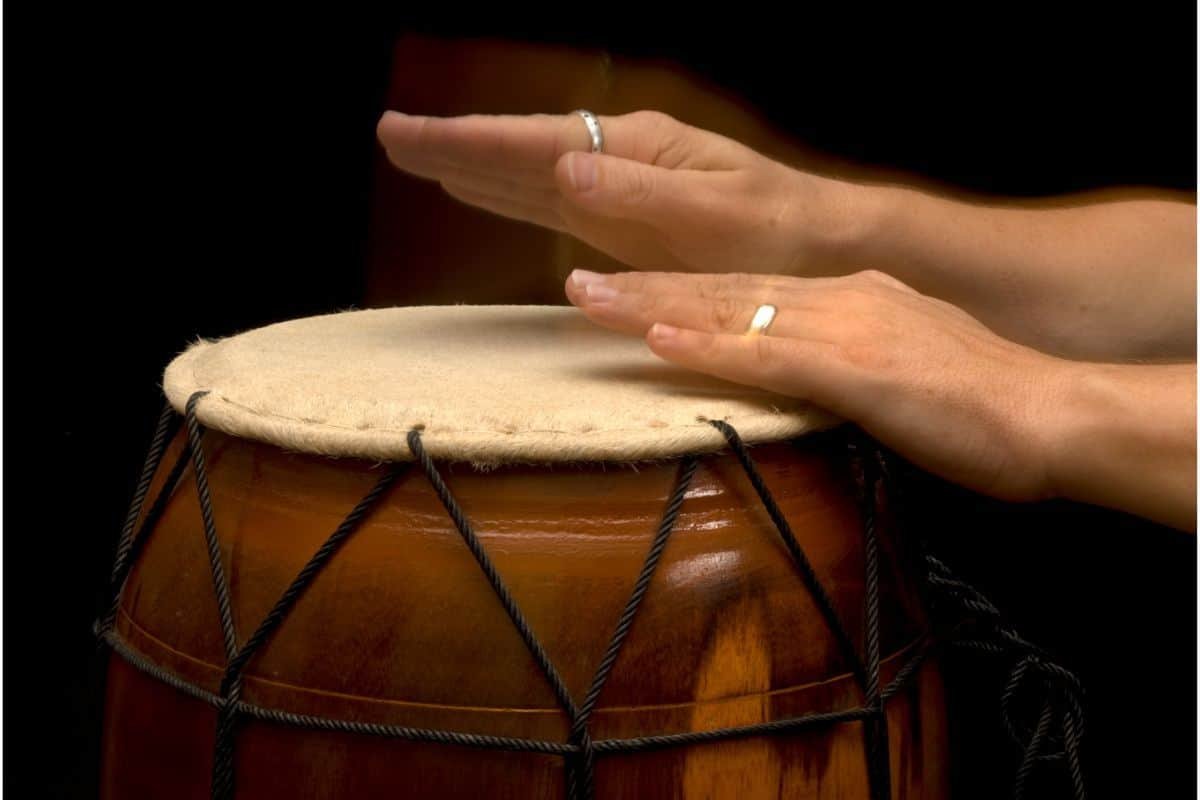What Is a Polyrhythm? And How to Play It?

As the name suggests, polyrhythm is multiple rhythms (at least two) played simultaneously. This results in meters that are sophisticated, exquisite, and hard to track – anything but dull for a listener. So, what is a polyrhythm for a musician? This technique is rather hard for a beginner, but when implemented by a master, it’s one of the most impressive things about music at all.
What rhythms can you combine? Are there any technical tricks to help you play a polyrhythm? Here are the basics, including the polyrhythms definition, tips on learning, and something on the practical implementation of polyrhythmia.
Guide on Polyrhythms
Contents
Let’s see polyrhythmic drum beats a bit closer. There are some questions about it: what does polyrhythm mean? What genres require polyrhythms? How does one learn to play polyrhythms? Yes, this mastership is cool to achieve, so let’s see how you learn polyrhythmic structures and how you play them.
What is a polyrhythm?
A polyrhythm is a musical technique that implies using different rhythms simultaneously on the same track. The simplest of them is a 2:3 polyrhythm, where 2:2 and 3:2 beats are played synchronously. With one hand, you play eighth notes, and with another, triplets.
By no means are polyrhythms drum exclusive. There are polyrhythmic techniques for piano, for example. What they have in common is the necessity to count and calculate the beat.

Where are polyrhythms used?
Polyrhythmic drum beats are not as common for pop or regular rock music. They are widely used, for example, in jazz. Do you remember that poster from Whiplash? “If you don’t have the ability, you wind up playing in a rock band.” Flattering for jazzmen, but wrong unless we forget about math rock, progressive rock, or ethnic rock, with other genres that also require exquisite drum work. Did I just say “ethnic“? I should have started with it, as many ethnic traditions (especially those with prevailing drums) use this technique too.
Anyway, if you know it, you will know when and how to apply it, no matter if it’s a cover version, a jazz standard, or your own song.
Definition of Polyrhythm
The definition by Wikipedia says that it’s the “simultaneous use of two or more rhythms that are not readily perceived as deriving from one another.” For example, using 2/4 and 4/4 rhythms within the same track is not polyrhythm, as these rhythms fit in the same pattern by partial accentuation. But combining 3/4 with any of these will be a true polyrhythm. The same remains true for introducing 5/4, 6/8, 7/8, 7/4, and whatever ratio does not result in an integer, no matter how you turn it.
Okay, and what if we apply Potter Stewart’s criteria? Do you always know a polyrhythm when you hear it? Indeed, not any sophisticated meter qualifies, and here are two examples. Pink Floyd’s “Money” (considered an example of sophisticated rhythmic work) is not a polyrhythmic track. Its time signature just changes within the song from 4/4 to 7/8 and back again several times, but within each segment, the rhythm is one.
On the contrary, a rather recent Ethiopia by Red Hot Chili Peppers often gets truly polyrhythmic. While the drums and the bass play the 7/8 rhythm, the guitar and the vocals obviously count 8/8, catching up at some points.
So, how can you tell polyrhythm from changing meters within one track? Listen to it twice or more times, focusing on different instruments. With Money, no matter if you focus on the drums, the bass, the guitars, or the vocals, 7/4 fragments will remain 7/4, and so will 4/4 ones. With Ethiopia, the drums and the bass give you 7/4, and the vocals and the guitar give you 8/8. The same applies to pure drum beats if you focus first on the kick and then on the snare and keep counting. So, let’s proceed.
Counting Polyrhythms
Playing polyrhythmic drum beats requires a bit of training, and it starts with counting. The easiest way to calculate the polyrhythm is multiplication. For example, to combine the triplets and the standard 4/4 beat and get the 4:3 polyrhythm, make the following table:
| 1 | 2 | 3 |
| 1 | 2 | 3 |
| 1 | 2 | 3 |
| 1 | 2 | 3 |
As you see, the overall number of cells in the table is the least common multiple of 3 and 4 – that is, 12. That’s how you build the table for any combination: the number of rows is one meter, and the number of columns is the other.
That’s how you can excel at playing polyrhythms.
Each row here represents a triplet (the notes are numbered from 1 to 3). Now, let’s assume you play 3/4 with your hats, accentuating the first beat of each with a ride, and play 4/4 with the kick and the snare. So, this table goes as the following:
- 1 – for hi-hats and rides;
- 2 and 3 – for hi-hats;
- reds – for kicks;
- greens – for snares.
You can also call it a 3:4 polyrhythm, as both patterns you play are equal (unless other instruments of your band stick to just one of these).
Try to play this in any tempo you like, and you will notice that this table helps. Of course, these tables may help with any polyrhythm you invent and consider appropriate for your song. If you plan to combine 5/4 with 4/4, make a table with five columns and four rows. This calculation is based on the simple idea that you don’t use a polyrhythm for a small fragment of your tracks. If used once, it’s just a sophisticated rudiment.
What should you do as you play? You can start with a metronome, a hardware one, or a mobile app. It’s always assistance, no matter how artificial you feel it is. It’s not anymore artificial than the drums themselves. You can also count aloud: if Mississippi is too long, there are Missouri, Yukon, and… hmm… Kwai. If the Colonel Bogey March starts playing in your head at the latest name, accompany it with the most basic polyrhythm. Jokes aside, counting aloud is a good way to get into the beat. You can even move your lips silently if it helps you to set it.
Practicing Polyrhythms
As for the table above, it’s great, but you need to practice holding more than one rhythm in your head and following your internal metronome. So, which elements should you focus on? The answer is simpler than you might expect: the most important combinations are 2/3 and 3/2. Why? Because they are the simplest of all, and more complicated ones can be derived from them. For example, 5/4 is the 3/2+2/2, 7/4=3/4+4/4, and so on. As we always consider the denominator as a degree of 2 (4, 8, etc.), counting gets easier.
You can start with the most basic ones, like those described above. Another great way to start is to find polyrhythmic exercises on YouTube (no links, as these are numerous, and you can find the most suitable for your case). If you also play the piano, there are polyrhythmic piano patterns as well.
After Basics
Well, there are even more basic things than purely musical exercises, and these are about controlling your body as a whole. The very idea of polyrhythmic needs to be absorbed at the physical level. So, rhythmic exercises are what you may use as your regular workouts since you want to master polyrhythms.
One of the best time-tested techniques for mastering polyrhythms is Dalcroze Eurythmics (yes, the band’s name is made of this). This Swiss scientist and musician emphasized the importance of mastering one’s body in order to master music. Nowadays, there are many systems derived from Dalcroze’s. Polyrhythms take an important place in his system. It’s been introduced in the 1900s. You can also be interested in Gurdjieff’s Movements, a system that also emerged in the early XX century.
To master more advanced polyrhythms, you can first model them with software, using the table principle. Most drum sequencers are capable of this, but the one I’d recommend is FL Studio. The time-unlimited demo version of it is available for free. The only limitation you’ll face is the inability to reopen saved projects until you purchase the full version. But for our purpose, you just won’t need this at all. Neither will you need to buy plugins: the built-in drum sample bank will do.

FAQ
Knowledge of polyrhythms is sometimes as complicated as playing them. So I decided to address some questions that may arise even after reading this.
What is the best definition of polyrhythm?
As I’ve said, it’s the combination of rhythms that don’t derive from one another. You can feel it on the visceral level: if you can switch from one meter to another while listening to the music, and they don’t mirror each other, it is a polyrhythm. If you have a better polyrhythms definition, I’ll be glad to read it in the comments below. As for me, this one works fine.
What does polyrhythmic mean in dance?
It means that dancers can sync their movements with any of the rhythms they select in the music. If we take the 3-4 polyrhythm, the dancer can take any of the present meters as the base for movements. I am not a dancer, so I’d rather redirect you to this guide by Charise Roberts.
If you mean using polyrhythms in dance music, it’s an easy and efficient way to make it more energetic. You may think you won’t need months of practice as most of the work is done in the sequencer. Some drum machines are capable of handling polyrhythms, too. But practicing them on a real drum lets you embrace the idea on a visceral level.
Are polyrhythms hard?
Yes, they are rather hard, and embracing the idea can take just as much time as actually mastering the art. More than that: it may happen that you’ll never need the idea of polyrhythm even if you write several songs a day. But mastering this part of the art means you will do anything else much better.
What is the difference between polyrhythm and syncopation?
Syncopation is, essentially, displacing single beats within given meters. For example, if you play a regular backbeat and from time to time suddenly shift your kick or snare from their given position, but they all remain within the meter – that’s a syncopation. With polyrhythm, you play two rhythms simultaneously, but within these rhythms, the timing remains precise. Of course, the two can be combined, but playing polyrhythm with deliberate offbeat is an art.
What’s the difference between polyrhythm and polymeter?
When you play polyrhythmic music, you use different meters that resolve within the same amount of time, so different rhythms stay synced constantly. It’s on the contrary with polymeter: the basic subdivision (the time between notes) is the same, but the meter is different for various instruments, so one runs ahead of the other until it catches up after some tacts, and then again. So, polymeter and polyrhythm are the mirrored versions of the same approach.
Mo’ Better Beats!
Understanding: four syllables. Practicing: three. Combining these is the key to mastering polyrhythms. It’s rational and visceral at the same time, the point where the body and the mind should go together as one. Playing different beats simultaneously is among the pinnacle of mastering the drums – as well as the piano, or other instruments. Even if you don’t have a drum set right where you are, you can practice with your bare hands and a metronome app.
Do you want to ask a question? Or show off your success? Or discuss some learning method? You’re always welcome in the comment section! Feel free to write whatever-related thing you want!

